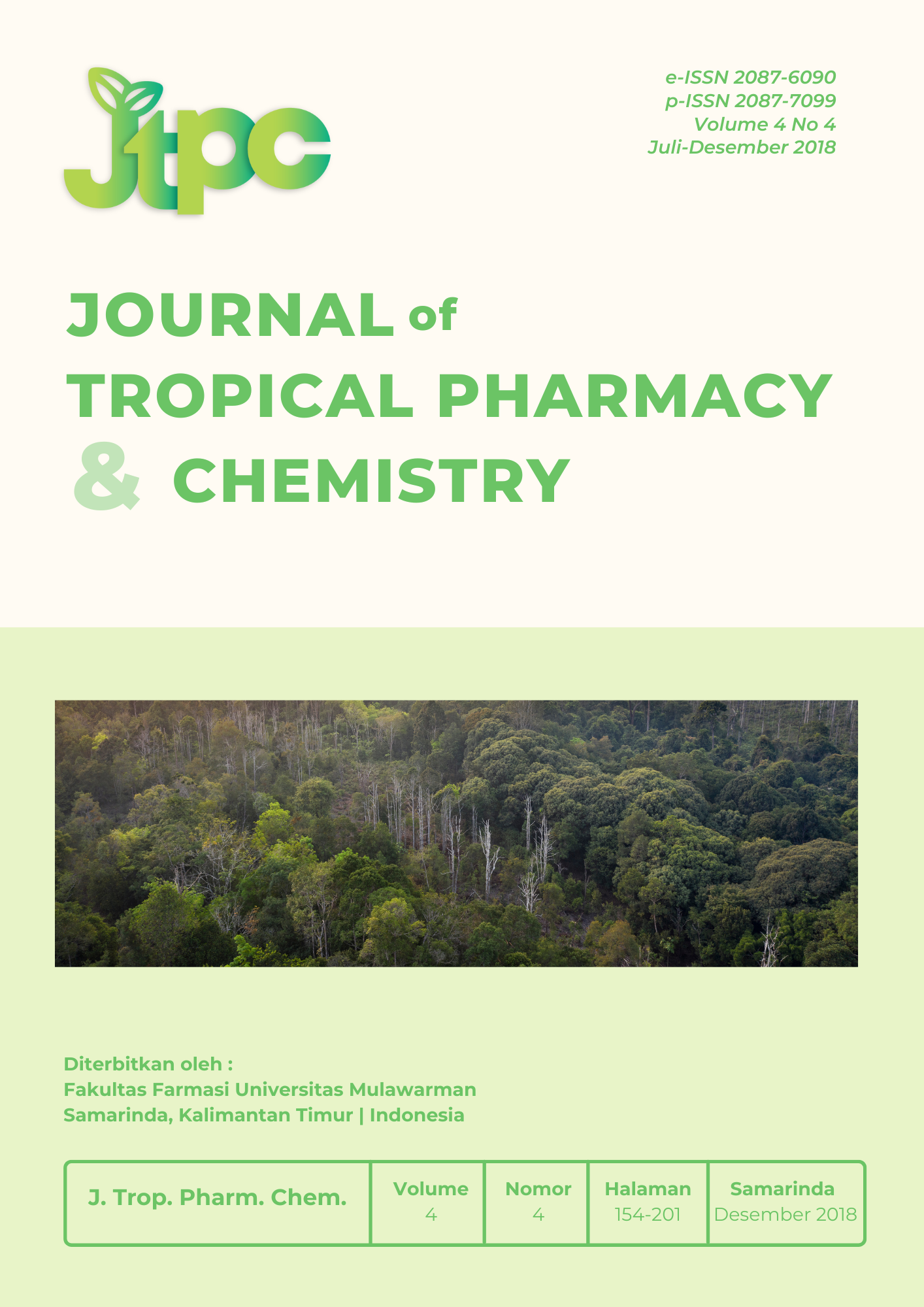Synthesis and Characterization of Methyl Amino Polystyrene as Resin Material of Chromatography
DOI:
https://doi.org/10.30872/j.trop.pharm.chem.v4i4.271Keywords:
Cation-Exchange Resin, Methylamino PolystyreneAbstract
Ion-exchange chromatography has been widely used in various separation process and purification. Commercial ion-exchange resin mostly uses polystyrene as stationer phase. This study reviewed the synthesis of cation-exchange resin with polystyrene as starting material. Polystyrene must be activated in order to make one of aromatic carbon chains being able to be binding with acetamide n-hidroxymethyl electrophilic. Polystyrene activation was conducted through two stages, i.e. (1) the formation of amidomethyl polystyrene (AMDP), and followed with (2) elimination of acyl group. The activation of polystyrene generated white methylamino polystyrene (MAP) resin, of which its characterization used spectrophotometry UV, Fourier Transform-Infrared (FTIR), and density of MAP resin confirmed by pycnometer. The results showed that the characterization of FTIR and spectrophotometer UV for AMP exhibited forming amino propyl group at 3374.52 cm-1 with ?max 230 nm due to N–H bond; and the average of density of AMP resin sample was 1.7158 g/mL.
Downloads
References
Anggraeni, A., E. Aghnia M., Sofyatin, T., Hendrati, D., Bahti, H. H. 2017. Preparation of Phosphonated Cation Exchanger Resins and The Exchange Efficiency of Rare Earth Elements, Jurnal Sains dan Terapan Kimia, Volume 11, No. 2 (Juli 2017), 45-51
Lee, Y. S., S. J., Ryoo & T. K., Lee. 2008.Aminomethyl Polystyrene Resin and Preparation Process for the Same. United States Patent US 7,442,745B2.
Fathy, M., T. A. Moghny., M. A. Mousa., A. H. A. A. El-Bellihi., & A. E. Awadallah. 2015. Sulfonated Ion Exchange Polystyrene composite Resin For Calcium Hardness Removal. International Journal of Emerging Technology and Advanced Engineering, Volume 5, Issue 11, November 2015.
Fathy, M., M. A. Mousa., T. A. Moghny., A. Hameed., E. Bellihi., & A. E. Awadallah. 2016. Novel Synthesis of Chloromethyl Functionalized Waste Polystyrene or Amorphous Carbon Thin Film Composite Resin. Int. J. Sci.: 14(3), 2016, 1243-1250. ISSN 0972-768 X.
Haddad, P. R. & P. E .Jackson. 1994. Ion Chromatography: Principles andApplications. Elsevier. New York.
Zhang, Q., Shouxin, W., & Ziqiang, Lei. 2006. Heterogeneous Baeyer-Villiger Oxidation of Ketones using Hydrogen Peroxide as Oxidant Catalyzed by Aminomethyl Polystyrene resin Supported Tin Complex. Q. Zhang et al. L Reactive & Functional Polymers 66 (2006) 1278-1283




